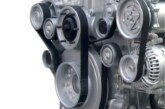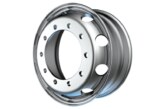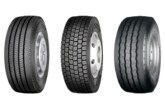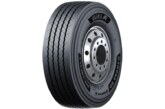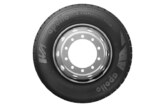
Kevin Welling, Training Academy Manager for Axalta in the UK and Ireland, shares practical tips to help CV refinishers cut down on process times.
Today’s commercial vehicles are state-of-the-art and can cost in excess of £1 million. They increasingly use an array of effect colours, which can present a challenge for even the most experienced refinishers. Standox, one of the global refinish brands from Axalta, helps bodyshops tackle the trickiest CV repairs, whilst providing the quality and durability CV owners demand.
Speeding up the process time
The key to speeding up process times is to use the best products in the most efficient way. Most bodyshops will be working with passenger car paints to repair metallic and pearl effect finishes; however, CV repairs are more complex due to the multiple substrates and large flat surfaces involved.
To repair effect colours, Standox recommends its waterbased Standohyd Plus basecoat. When using this basecoat as part of the Standox One Visit Application system, CV refinishers will save time, energy, and materials. This efficient wet-on-wet system only requires refinishers to apply one coat each of filler, basecoat and clearcoat, in 1.5 spray passes, with no flash off times required in between.
Because a wet-on-wet basecoat system relies on water evaporation to dry, refinishers can get even more efficient results using an assisted blower system that will ensure the coats dry quickly and effectively before the clearcoat application. Once the clearcoat has been applied and baked, the resulting finish will be good and hard, making the repair much easier to polish.
When working with effect or bespoke colours, accurate colour matching is of the utmost importance. The use of the latest generation spectrophotometer, like the Standox Genius iQ2, helps speed up this process enabling refinishers to identify and colour match these and other fleet colours quickly and easily. Traditional colour matching methods like fan decks are both time consuming and prone to error as ambient lighting can affect colour choice and this is particularly true of effect colours.
An online integrated colour management system, like Standowin iQ Cloud, is the final step to saving process time, as it connects to the latest spectrophotometers via WiFi. Together, the two tools determine precise measurements and exact colour formulas quickly, and information can be sent or accessed from a mobile device anywhere in the bodyshop.
Using a cloud-based colour management system and a WiFi enabled spectro together means bodyshops reap an incredibly efficient workflow, so they can process more repairs, while achieving consistently excellent results.
Reducing paint costs
To avoid applying an excessive amount of basecoat, which can affect the overall finish and also waste product, the choice of filler is key. The FC1 (white)/2 (mid grey)/3 (black) fillers from Standox give maximum coverage in the shortest time and require the least amount of basecoat applied on top.
For CV repairs, they can be used under Standohyd Plus basecoat for effect colour repairs, or Standofleet basecoat for non-effect solid colour repairs. These fillers can be matched to the more than 200,000 colours within the Standowin iQ colour database.
Efficient colour change
For a perfect colour change, the old or original paintwork needs to be well cleaned and degreased before the basecoat is applied. For effect colours, sanding is also necessary. Standofleet 2K VOC Wet On Wet Filler U2570 is used for effect colours and the Standox VOC compliant 2K Sealer Transparent U2020 is recommended for solid colours, as it can be used for efficient colour changes without pre-sanding under Standofleet 2K topcoats.
Both have been designed to speed up colour changes. They are ideal for multitoning and striping on large vehicles such as coaches. Once applied, they are flashed-off and the colour can then be applied straight away – or after sanding for effect colours – which means colours can be layered quickly and efficiently.
Easier blending repairs
With Standohyd Plus basecoat and One Visit Application, blending repairs are a simple one-step process application for metallic and other effect colours. The colour is blended into the adjacent panel and, after a short flash-off, the clearcoat can be applied. Standox recommends Standofleet VOC 2K Clear K9350.
It is vitally important that, when blending the Standofleet 2K topcoat and blending the clear coat, the same hardener and thinner are used. If different products are mixed, the repair will not dry properly and can result in surface defects such as gloss drop.

